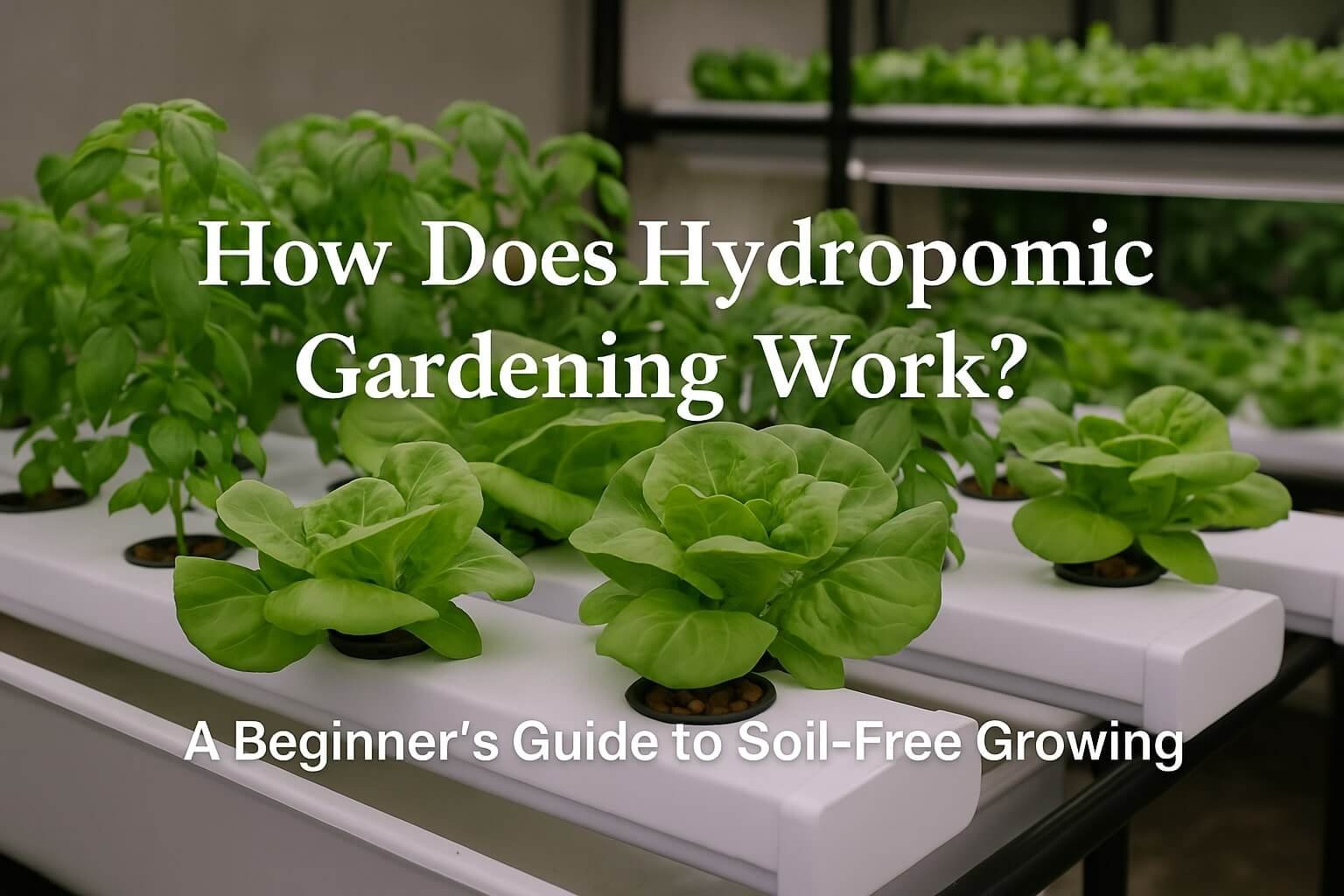🌱 Introduction: The Rise of Hydroponic Gardening
Hydroponic gardening is transforming how we grow food. With no soil involved, plants thrive in nutrient-rich water, making this method cleaner, faster, and more sustainable. Whether you’re short on space, want to grow year-round, or seek eco-friendly solutions, hydroponics could be your green-thumb breakthrough.
💧 What Is Hydroponic Gardening?
Hydroponics is a method of growing plants using water-based nutrient solutions instead of soil. The roots are supported by inert mediums like coconut coir, perlite, or clay pellets. The system delivers nutrients directly to the roots, maximizing efficiency and growth speed.
⚙️ How Does Hydroponic Gardening Work?
Let’s break it down step by step:
1. Water Reservoir
A container holds water mixed with essential nutrients tailored to specific plants. This liquid sustains the entire system.
2. Growing Medium
Instead of soil, plants are anchored in materials like rockwool, vermiculite, or hydroton. These provide stability and allow oxygen to reach the roots.
3. Nutrient Solution
Water-soluble nutrients—nitrogen, phosphorus, potassium, calcium, and magnesium—are added to fuel plant growth.
4. Delivery System
The nutrient solution circulates either actively (via pumps) or passively (through gravity or wicking).
5. Oxygen Supply
Air pumps or oxygenating stones ensure roots receive adequate oxygen—essential for preventing root rot and promoting healthy growth.
6. Grow Lights or Sunlight
In indoor setups, LED or fluorescent grow lights replace natural sunlight to fuel photosynthesis.
🧪 Types of Hydroponic Systems
Here are the six main systems you might explore:
| System Type | How It Works | Best For |
|---|---|---|
| Deep Water Culture (DWC) | Roots suspended in oxygenated nutrient solution | Leafy greens, herbs |
| Nutrient Film Technique (NFT) | Thin stream of nutrients flows through channels | Fast-growing plants |
| Wick System | Passive absorption of nutrients via wicks | Beginners, low-maintenance |
| Ebb and Flow (Flood & Drain) | Cycles of flooding and draining the roots | Versatile setups |
| Drip System | Nutrients dripped onto roots from above | Fruit-bearing plants |
| Aeroponics | Roots suspended in air and misted with nutrients | High-tech gardeners |
🌎 Benefits of Hydroponic Gardening
Here’s why hydroponics is turning heads:
- 🌱 Faster Growth: Nutrients are absorbed more efficiently, resulting in quicker yields.
- 🧼 Cleaner Setup: Say goodbye to messy soil and pests.
- 💧 Water-Efficient: Uses up to 90% less water than traditional gardening.
- 🏡 Space-Saving: Ideal for urban spaces, apartments, and small balconies.
- 🌿 Year-Round Growing: Indoor systems defy seasonal limits.
- 🌍 Eco-Friendly: Minimizes pesticide usage and land degradation.
🛠️ Getting Started with Hydroponics
Here’s a simplified guide to start your own hydroponic garden:
- Choose Your System – Beginners often start with Deep Water Culture or Wick systems.
- Select Plants – Lettuce, basil, spinach, and strawberries are ideal.
- Gather Materials – Nutrients, pH testers, grow lights, and a grow tray or buckets.
- Monitor pH & EC – Ideal pH is 5.5–6.5; electrical conductivity helps gauge nutrient strength.
- Keep It Clean – Avoid algae and bacteria buildup through routine cleaning.
- Track Growth – Keep notes to refine your system over time.
🌻 Common Mistakes to Avoid
Even seasoned gardeners can stumble! Watch out for these missteps:
- ❌ Neglecting pH Balance
- ❌ Over- or Underfeeding Nutrients
- ❌ Poor Oxygen Supply
- ❌ Using Tap Water with Chlorine
- ❌ Ignoring Light Requirements
🧠 FAQ: Frequently Asked Questions
🤔 How much time does hydroponic gardening require?
Hydroponics can be low-maintenance once set up. Expect about 15–30 minutes daily for checks and feeding.
🪴 Can I grow root vegetables like carrots hydroponically?
Yes, but they require deep growing containers and proper support to thrive.
🧪 What nutrients are needed in hydroponics?
Key nutrients include nitrogen (N), phosphorus (P), potassium (K), calcium (Ca), and magnesium (Mg), often sold in premixed solutions.
💡 Do I need grow lights?
If growing indoors or without adequate sunlight, yes. LED full-spectrum lights work best.
🌍 Is hydroponics eco-friendly?
Absolutely. It conserves water, reduces pesticide use, and minimizes environmental impact.
🏁 Final Thoughts
Hydroponic gardening is more than a trend—it’s a smart, sustainable solution for modern living. Whether you’re a city dweller or someone seeking cleaner produce, this method offers control, efficiency, and year-round joy. Embrace the soil-free revolution and watch your plants flourish.





